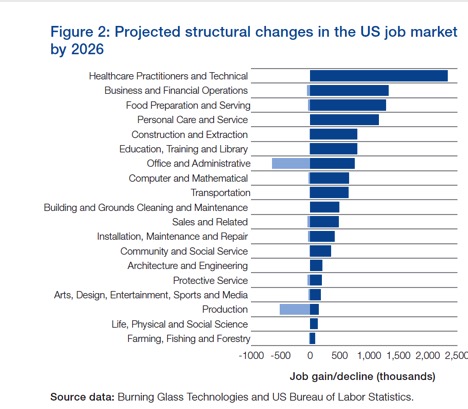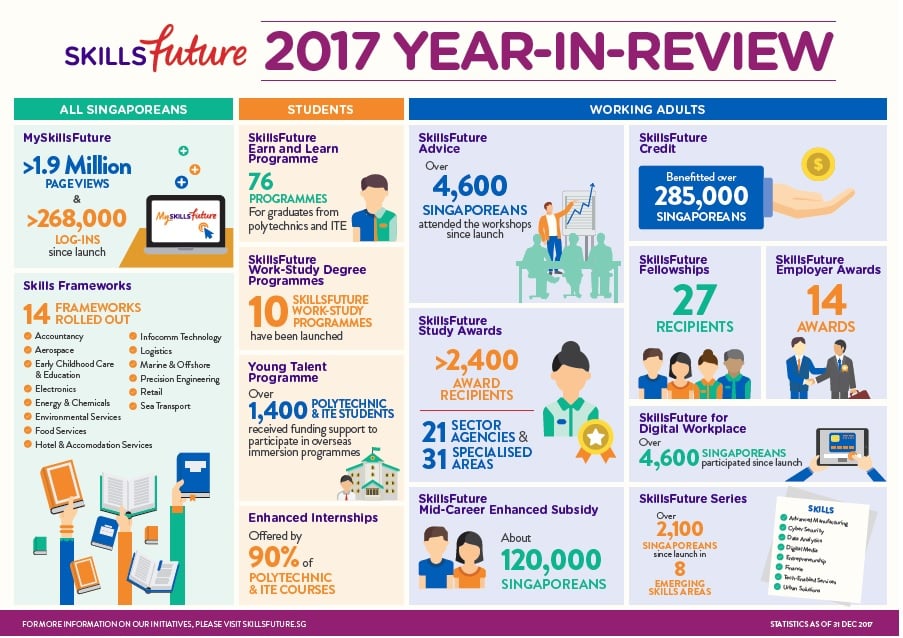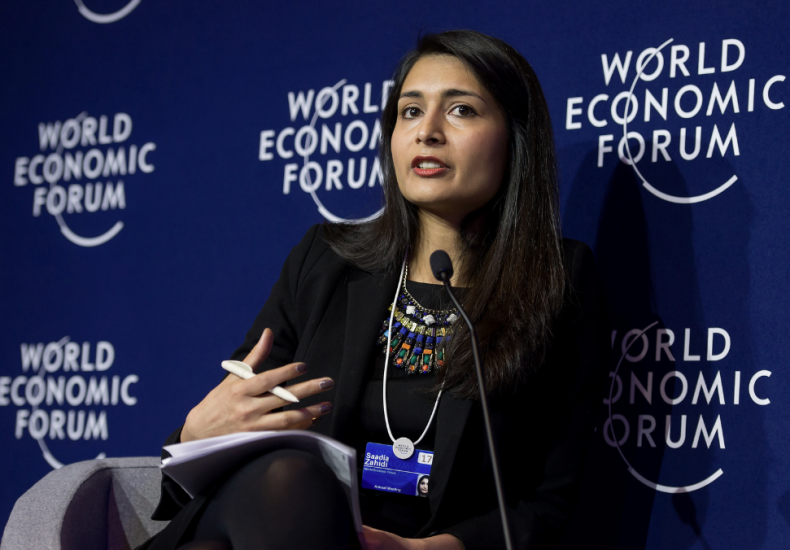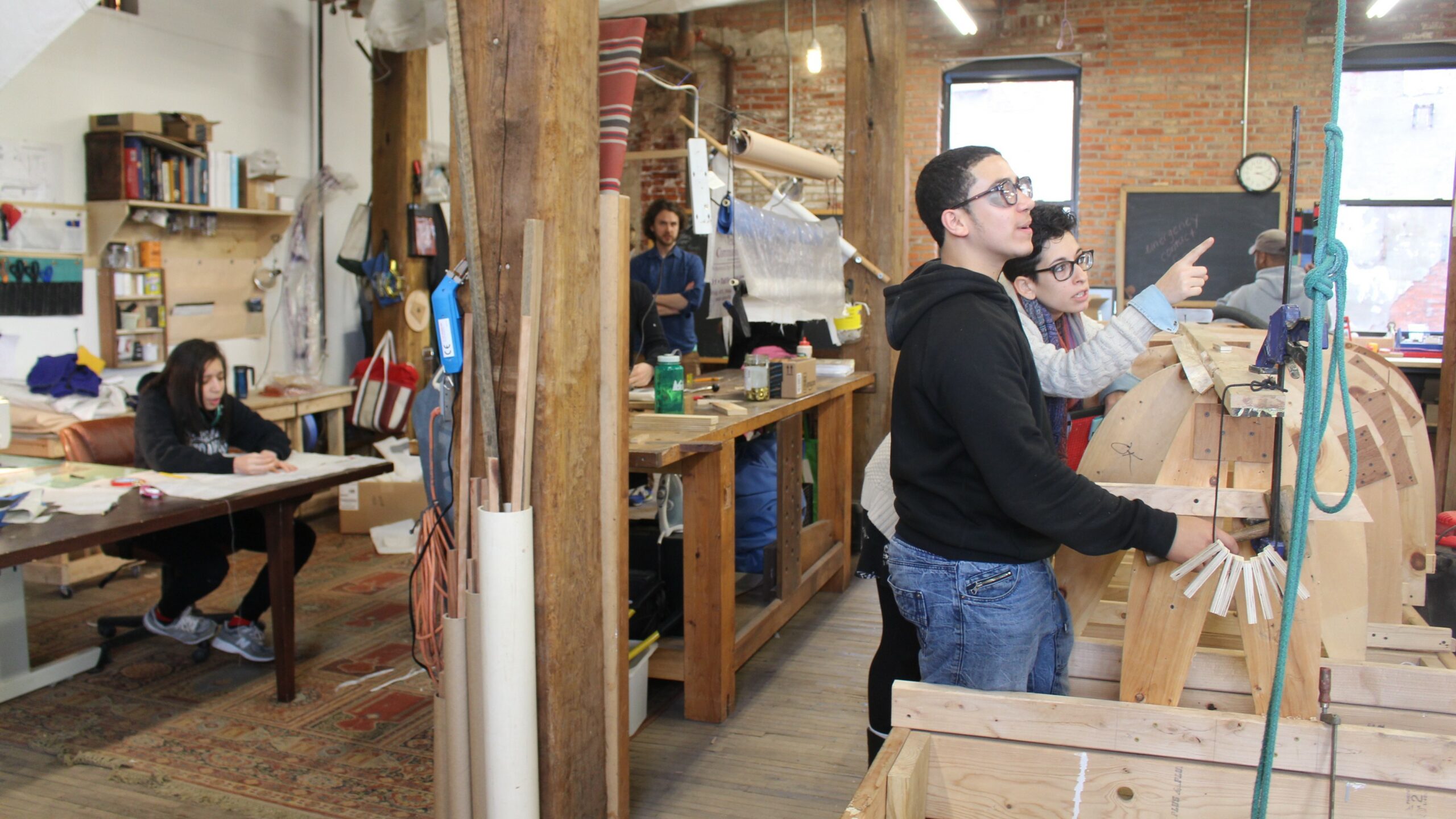In her Shaping the Future Workforce series, WorkingNation Executive Producer and Senior Business Correspondent Ramona Schindelheim interviews business leaders and workforce experts about innovative solutions to create skilled workers for the 21st-century economy.
We are in the midst of an unprecedented global technological revolution that is changing every aspect of our lives. Businesses and economies worldwide are being disrupted as they struggle to keep up with the rapidly-changing technologies and find workers with the skills to fill job openings.
Some see this so-called Fourth Industrial Revolution as a threat to the livelihoods of working men and women; others see it as an opportunity. The World Economic Forum’s Saadia Zahidi is among the latter.
“As many experts — such as economist David Autor — point out, we are not about to run out of jobs, if by that we mean important work that needs doing in our economy and society. There are exciting opportunities to use technology to make the work of humans better and more meaningful, contrary to the pessimistic narrative of technology replacing us,” Zahidi tells WorkingNation.
Zahidi is the Head of Gender, Education, and Work for the WEF, an international public-private partnership with the ambitious mission of improving the state of the world. In all interpretations, that means taking a hard look at the changing nature of technology, business, and employment around the globe.
“We see a number of emerging areas of opportunity when it comes to the jobs of the future. One of these areas concerns, unsurprisingly, directly technology-related jobs in fields such as data analytics and engineering,” says Zahidi. “Another growth area we see is in human-centric roles such as childcare and eldercare, but also in teaching.”

Last year, the organization reported that the most in-demand jobs in 2017 didn’t even exist five or ten years ago. That pace of change is accelerating. An estimated 1.4 million U.S. jobs will be disrupted in some way by 2026, forcing workers to seek other work. Some of their skills will be transferable; others will not. “By one popular estimate, 65% of children entering primary school today will ultimately end up working in completely new job types that don’t yet exist,” according to the World Economic Forum.
“The fundamental issue is not about the absolute quantity of jobs, but about how automation will continue to change the composition and, potentially, the quality of a wide range of jobs — both positively and negatively,” Zahidi says.
So, while there is opportunity ahead, there is also work to be done to capitalize on it. There is a critical and urgent need to step up workforce reskilling.
“We need to move away from primarily focusing on jobs as fixed sets of tasks that need doing, to focusing on the skills and knowledge people have developed as part of their current job and how these are transferable,” says Zahidi.
She acknowledges that job transitions will always involve some degree of relearning, uncertainty and culture change. That is where the concept of lifelong learning comes in.
“We can set people up for success by helping them better understand how they can productively build on what they know already and what the best, realistic options are. We should be wary of thinking of lifelong learning as a chore, imposed on us by changing technology,” argues Zahidi. “In fact, there is a lot of creative and liberating potential in moving towards a culture in which it is the norm for all of us to continue developing ourselves, our expertise and knowledge throughout our working lives.”
RELATED STORY: AT&T’s chief learning officer helps instill a culture of lifelong learning
Businesses must have an active stake in driving the mindset change. Zahidi says, at a minimum, “businesses need to recognize that they can no longer simply be buyers of ready-made human capital. What is clear is that we cannot simply expect people to shoulder all the financial burden and time commitment of reskilling and lifelong learning by themselves, leaving the rest of our current system in place unchanged.”
As an international organization, the World Economic Forum looks at workforce solutions that are working in other countries. And while they are making headway, there is also room for improvement. How a country develops its human capital — the knowledge, skills, and experience of its population — “can be a more important determinant of their long-term (economic) success than virtually any other factor,” argues the WEF in its Global Human Capital Report.
The countries doing the best job at this are Norway, Finland, Switzerland and the United States, in that order. The U.S. received high scores due to high skill diversity and its younger generation enrollment rate in tertiary education programs. On the flip side, the U.S. also has a sizeable low-skilled sector. “The United States also underperforms…on the quality of its primary schools, highlighting that there is no room for complacency when it comes building the human capital potential of the nation’s next-generation workforce,” according to the report.
“No country has yet devised a truly comprehensive solution for all these issues that we have been talking about. However, there are a number of initiatives that others could learn from,” Zahidi tells me. She points to programs in two countries also in the top ten of that Global Human Capital Report. Lifelong learning is key to those initiatives.
Zahidi singles out Singapore’s SkillsFuture program as one of the most ambitious efforts out there. It calls itself “a national movement to provide Singaporeans with the opportunities to develop their fullest potential throughout life, regardless of their starting points.”
SkillsFuture’s four goals are helping people make well-informed choices on education, training, and careers; creating an education system that is continuously evolving based on needs; promoting employer recognition and career development based on skills and mastery, and supporting and celebrating lifelong learning.
The government-backed effort gives Singaporeans credit toward training programs and works with employers to develop and fund (up to 70 percent) curriculums designed to train potential workers through online and on-site programs. 285,000 people benefited from that government training credit in 2017.

Another program Zahidi likes is Denmark’s national “Disruption Council,” which brings together labor unions, business leaders, and the government to track new trends in technology and their potential impact on the workforce. Their goal is to find collaborative solutions.
Danish Prime Minister Lars Løkke Rasmussen leads the council which was created out of an urgent need to take care of Denmark’s people, according to his speech at last year’s meeting of the Organization for Economic Co-operation and Development (OECD).
“We cannot neglect, that to millions of people – globalization equals job insecurity. Our societies, labor markets, and companies need to adapt to future demands. The best way is to provide people with the skills needed to get a new job when the old one disappears,” argued Rasmussen. “Therefore, we need to provide lifelong education at all levels — to all people.”
“The places commonly referred to as getting things right — such as Singapore or the Scandinavian nations — are often economies that are used to extensive collaboration between businesses, governments, and workers themselves,” points out Zahidi. “There is a lot the private sector can begin doing by itself, for example by coming together as a sector or across industry lines, and by working with stakeholders such as community colleges.”
“Clearly, though, what businesses and workers will need to do to capitalize on these opportunities is to invest in building a strong pool of relevant skills — and be much more purposeful and informed about these skills needs than previous generations,” Zahidi says. “This is a fast-moving space and new, impressive solutions will continue to emerge.”
Join the Conversation: Share your thoughts on this Shaping the Future Workforce article on our Facebook page.
Connect with Ramona via Twitter or her website. You can read her previous articles for WorkingNation at this link.











